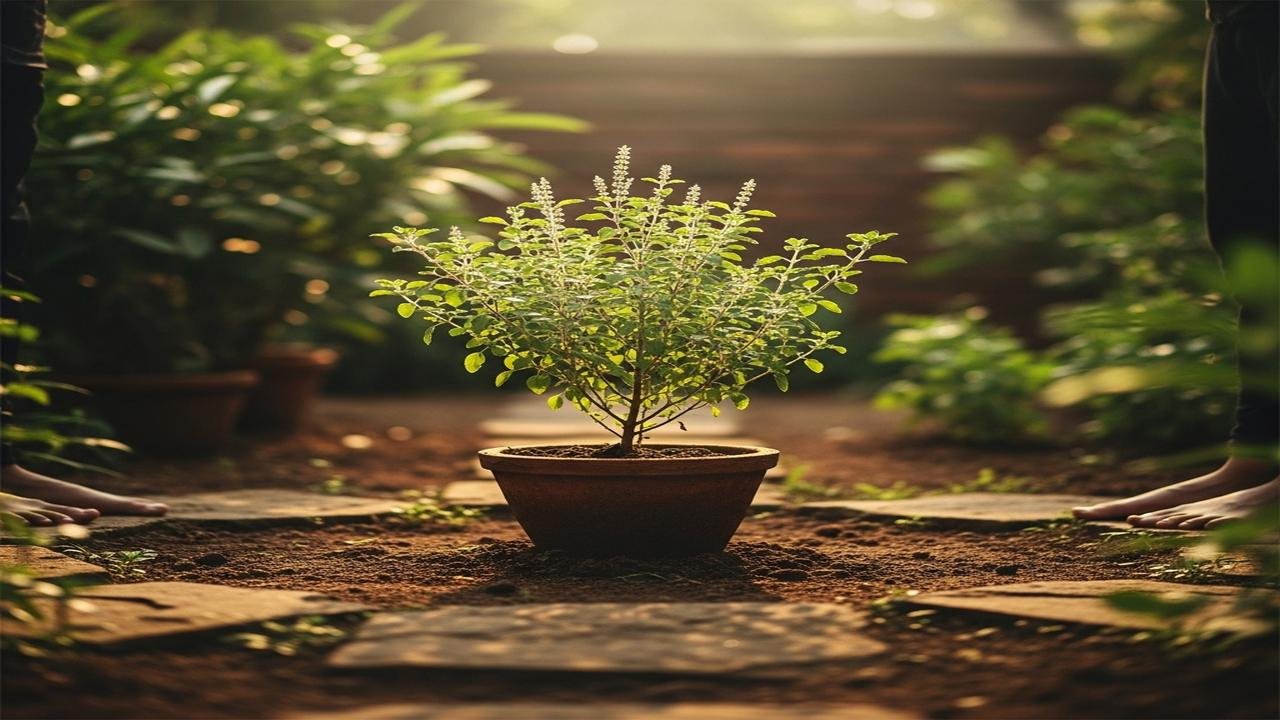Why We Circumambulate the Tulsi Plant, Secret Inside

Why We Circumambulate the Tulsi Plant: A Story of Devotion, Life, and Home
There is a quiet rhythm in many Indian homes at dawn and dusk: a soft bell, the smell of incense, small hands cupped in prayer around a green, fragrant plant. That plant is Tulsi — sacred basil — and the gentle walking around it, called pradakshina or circumambulation, is an age-old act filled with meaning.
Long ago, stories told in villages and temples framed Tulsi as more than a plant. She is seen as a living goddess, Vrinda or Tulasi, who embodies purity and devotion. Mythology says she chose a simple life in the earth to bless people. Over centuries, families learned to treat Tulsi as a guardian at the center of home life, a bridge between the worldly and the divine. Walking around her is a way of honoring that presence.
To understand why we circumambulate, imagine walking in a circle around something precious. The circle itself has deep symbolism in Hindu life — it represents continuity, protection, and the flow of time. When we walk clockwise with the Tulsi to our right, we keep the sacred near our heart and show respect without turning our back on the divine.
There are practical and spiritual layers to this simple ritual:
- Devotional connection: Circumambulation is a physical prayer. Moving slowly around the Tulsi, offering water or flowers, helps the mind focus and the heart settle. It is a way of saying, “I remember you,” each morning and evening.
- Symbol of surrender: The circular movement teaches humility. Ego moves outward; devotion stays inward. This gentle act reminds us that life goes on in cycles and that we are part of something larger.
- Family and cultural unity: In many households, people gather around the Tulsi together. Grandparents, parents, and children share songs, stories, and blessings. The simple act of walking together strengthens bonds and passes devotion across generations.
- Health and harmony: Tulsi is known for its medicinal qualities. Its fragrant leaves release purifying compounds. Circumambulating and spending a few moments near the plant is also a subtle way to connect with nature and invite peaceful energy into the home.
Scriptures and temple traditions give further weight to this practice. Texts praise Tulsi for bringing prosperity and spiritual upliftment. In many regions, special ceremonies — like the Tulsi Vivah in the Kartik month — transform the plant into a living deity, celebrating marriage and the union of human and divine love. Circumambulation is part of these observances, a simple gesture threaded through larger rituals.
Today, the practice keeps its old warmth while adapting to modern life. Urban families place potted Tulsi on balconies or terraces; children learn to bow and turn slowly even in small spaces. Some people combine the ritual with a short prayer or a moment of mindfulness, allowing the age-old custom to support contemporary needs for calm and connection.
There is also a social side. Village Tulsi platforms are places for evening bhajans and storytelling. People meet, share news, and strengthen social ties. Walking around Tulsi becomes both private devotion and communal ritual — a practice that nurtures individual peace and public harmony.
When you choose to circumambulate the Tulsi, you step into a living tradition. The act asks little of the body but invites the heart to remember what matters: reverence for life, respect for nature, and unity with family and community.
Conclusion: In the hush of a morning or the glow of dusk, walking around the Tulsi is more than a custom. It is a gentle lesson in humility, presence, and love. Try it, and you may find a small stillness settling in your day — a reminder that sacredness can grow from the simplest acts.
